Heat Tolerant Conifers 2
forrest30295
10 years ago
Featured Answer
Comments (44)
scotjute Z8
10 years agolast modified: 9 years agoforrest30295
10 years agolast modified: 9 years agoRelated Discussions
Lung Fir. Tolerates heat and total shade.
Comments (1)Hey...you get to see a PICTURE of "a shocking image of the tree inside Mr Sidorkin's lung" at the link above! Barbara...See MoreNeed recommendation for heat/drought tolerant zone 7
Comments (1)She needs to go into the TLC on Memorial and ask for Marteen. He is the primary overseer for all conifer orders. He has years of experience with conifer survival in this area. He will shoot her straight on what will make it here and their variety to pick from is impressive. Unfortunately their prices are fairly high as well. I'm currently in the middle this spring and coming fall of putting in an extensive combination of conifers. I'm trying to see how far I can push micro-climating but definately anticipate losses. Our heat is not very conducive to a lot of conifers. mark...See MoreHeat and Arid tolerant Conifers
Comments (11)If somebody sticks something in their yard and doesn't mulch it or even keep it adequately watered - or give it something else it needs to get going in that environment, like setting up shade cloth the first few years - and it therefore dies, that does not necessarily indicate that it cannot be grown there at all. Throughout the intermountain region there is a fuelwood buildup problem in forested areas due to the Smokey Bear policy preventing ground fires, allowing Douglas fir etc. understory thickets to form beneath the pines. Anywhere there the elevation is high enough, Douglas fir can grow as a wild tree where there is some shade (and a forest litter layer) to alleviate the full effects of the climate. So it may in fact be possible to grow it lower down when cultivation techniques like consistent irrigation are employed....See MoreHeat Tolerant Question #2 (Curiosity)
Comments (4)Then most likely it is something other than the heat that is affecting the older plants. In your other post on this question (linked below so all info is available) you mentioned you are growing them in 5 gallon containers so one likely explanation is that the older plants had become root bound. Many factors affect plant health and weather is only one of them. Dave Here is a link that might be useful: Part 1 of your question...See Moregardener365
10 years agolast modified: 9 years agoclement_2006
10 years agolast modified: 9 years agosalicaceae
10 years agolast modified: 9 years agoforrest30295
10 years agolast modified: 9 years agoritmatt
10 years agolast modified: 9 years agobarbaraincalif
10 years agolast modified: 9 years agoconiferjoy
10 years agolast modified: 9 years agolou_spicewood_tx
10 years agolast modified: 9 years agoforrest30295
10 years agolast modified: 9 years agotexjagman
10 years agolast modified: 9 years agoogcon
10 years agolast modified: 9 years agofairfield8619
10 years agolast modified: 9 years agotexjagman
10 years agolast modified: 9 years agoforrest30295
10 years agolast modified: 9 years agotexjagman
10 years agolast modified: 9 years agofairfield8619
10 years agolast modified: 9 years agoconifer50
10 years agolast modified: 9 years agoconiferas_br
10 years agolast modified: 9 years agotexjagman
10 years agolast modified: 9 years agoforrest30295
10 years agolast modified: 9 years agoarauquoia
10 years agolast modified: 9 years agosalicaceae
10 years agolast modified: 9 years agoforrest30295
10 years agolast modified: 9 years agoblue_yew
10 years agolast modified: 9 years agoMarcoMX
9 years agolast modified: 9 years agoconifer50
9 years agolast modified: 9 years agoMarcoMX
9 years agolast modified: 9 years agoconifer50
9 years agolast modified: 9 years agoospreynn
9 years agolast modified: 9 years agowinterfell
9 years agolast modified: 9 years agoMarcoMX
9 years agolast modified: 9 years agodavidrt28 (zone 7)
9 years agolast modified: 9 years agomidtn
9 years agolast modified: 9 years agoblue_yew
9 years agolast modified: 9 years agogeorgeinbandonoregon
9 years agolast modified: 9 years agoJoylin Guzman
8 years ago123cococo
8 years agoJoylin Guzman
8 years ago123cococo
8 years agoJoylin Guzman
8 years agozachua
8 years ago
Related Stories

GARDENING GUIDES10 Cold- and Heat-Tolerant Perennials and Shrubs for the Arid West
These flowering native plants shrug off the cold of winter and heat of summer while adding beauty to the drought-tolerant landscape
Full Story
GARDENING GUIDES10 Drought-Tolerant Shrubs That Thrive in Full Sun and Reflected Heat
Got a hot spot in your garden where plants often die? Try these tough shrubs that add beauty while shrugging off the heat
Full Story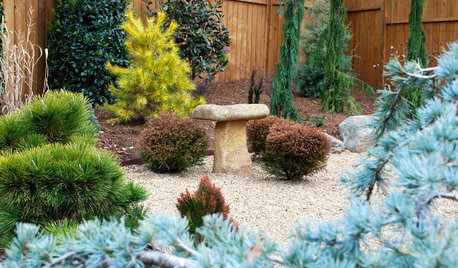
PLANTING IDEASDesigning With Conifers: Personality and Form in the Garden
Unique and full of interest, well-shaped conifers await a place your yard
Full Story
PLANTING IDEASStretch the Budget, Seasons and Style: Add Conifers to Your Containers
Small, low-maintenance conifers are a boon for mixed containers — and you can transplant them to your garden when they’ve outgrown the pot
Full Story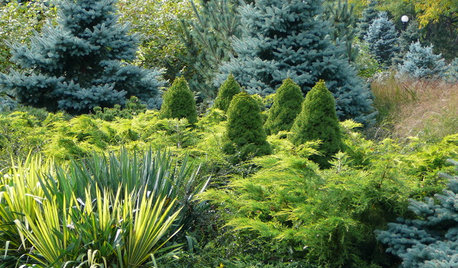
PLANTING IDEASDesigning With Conifers: Layers of Texture for Your Garden
Sharp and prickly or fine like ferns, richly textured conifers bring unexpected interest to the landscape
Full Story
LANDSCAPE DESIGNFlood-Tolerant Native Trees for Soggy Soil
Swampy sites, floodplains, even standing water ... if you've got a soggy landscape, these trees are for you
Full Story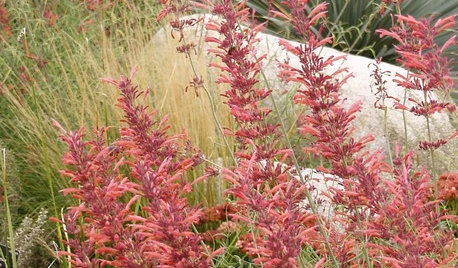
FLOWERS AND PLANTSAgastache Rupestris, a Heat-Loving Hummingbird Magnet
Threadleaf giant hyssop adds color and fragrance to late-summer and fall xeric gardens
Full Story
GREEN BUILDINGHouzz Tour: Passive House in Vermont Slashes Heating Bills
Its ecofriendly, low-maintenance design leaves a family with more time to relax and enjoy the weekend home
Full Story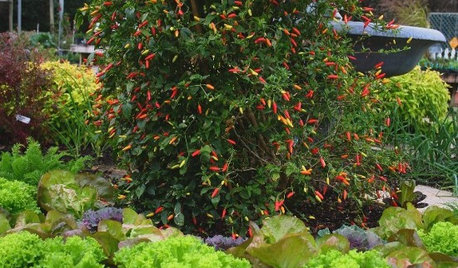
EDIBLE GARDENS6 Summer Edibles That Can Really Take the Heat
When garden temperatures soar, these herbs and vegetables rise to the challenge
Full Story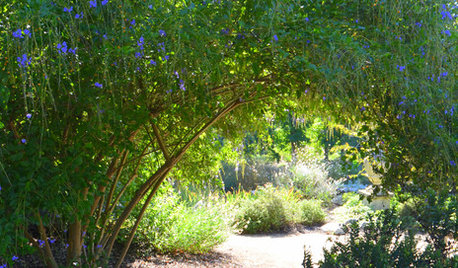
FLOWERS AND PLANTSHeat-Loving Duranta Erecta Blooms From Spring Into Early Fall
Golden dewdrops, a versatile tropical shrub, has delicate purple and white blossoms
Full Story


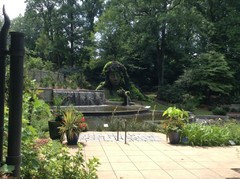


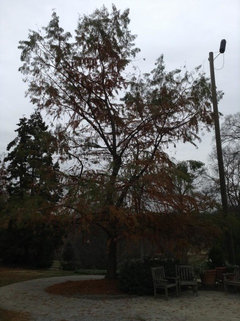



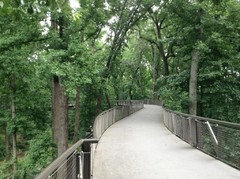

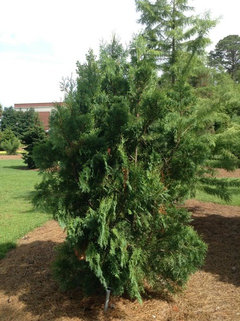
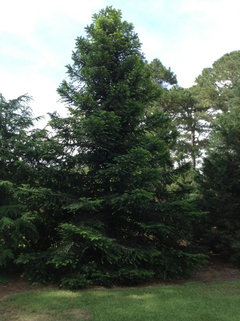


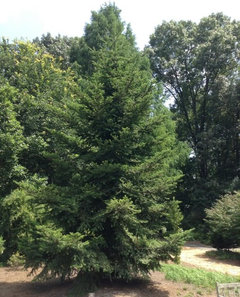

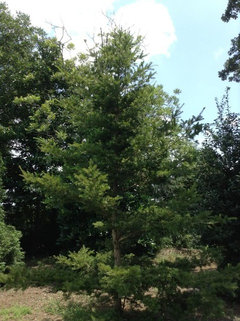






Sara Malone Zone 9b